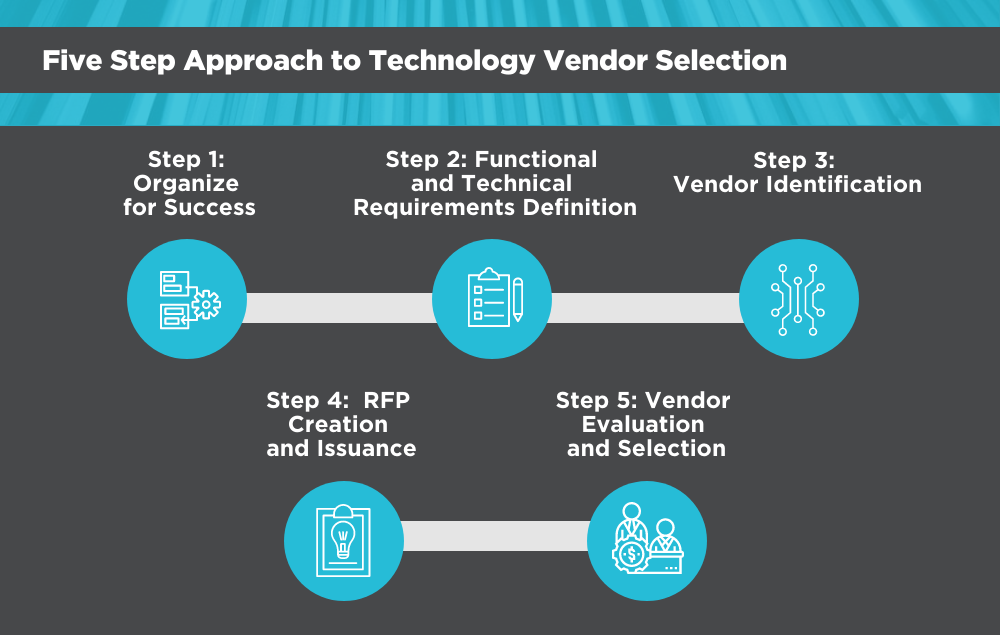
As a manager, choosing the right technology vendors requires careful consideration of various factors that can make or break your organization’s success. With technology playing an increasingly critical role in business success, selecting the right vendor and the best technology for your organization is an important decision that can have far-reaching implications on deployment and productivity. The ever-evolving landscape of technology solutions, combined with rapid changes within organizations, calls for reliable and scalable systems with easy implementation processes – all features which should be taken into account when navigating the technology vendor selection process.
The approach to selecting a technology solution impacts the path to implementation and often the return on the investment. Following a defined process, companies can avoid stakeholder indecision and ensure the selection meets business goals, cost requirements, and user experience expectations.
ScottMadden’s technology consulting helps organizations overcome criticalities by providing clear, practical guidance. Through our engagements, ScottMadden has developed a five-step technology vendor selection approach that enables organizations to navigate the vendor selection process and maximize their investment efficiently.

The first step in selecting a technology vendor focuses on foundational elements. The technology and vendor selection involve:
With data available, the focus shifts to assimilating and analyzing the current state. This typically involves conducting stakeholder interviews. The data analysis and interviews aim to gain insight into critical issues such as lack of work optimization and overall organizational performance. Functional and technical requirements definition lays the groundwork for the dimensioning of a new system.
This stage results in a high-level overview of process inefficiencies and areas where current technologies are underutilized or ineffective. During this stage, high-level requirements are identified for all core, in-scope processes. The requirements are then evaluated to establish a prioritized weighting. The prioritized requirements are the basis of the evaluation of the Request for Proposal (RFP).
With the requirements identified, it is time to establish a short list of technology vendors. This is achieved through issuing requests for information, reviewing potential vendors to satisfy requirements, and developing a final list of vendors to receive RFPs.
This step aims to evaluate vendors and enable more productive discussions and demos with vendors. Without requirements, sales teams focus on the items most important to the vendor, their latest “look and feel” or niche automation. The typical RFP packet includes the following:
In the final step, RFP responses are received, and technologies are evaluated and graded, leveraging the scorecard created during the RFP creation and issuance phase. Once technologies are scored, suitable vendors receive an invitation to demonstrate their solutions. At this point, the company should have the knowledge and scorecard to back vendor selection.
Technology impacts day-to-day operations within an organization. Tackling a new vendor selection without a proven approach that addresses the existing gaps, stakeholder concerns, and impacts on people and processes is a common pitfall. By conducting due diligence during the organizational phase through the vendor evaluation and selection phase, an organization can fully realize the benefits of technology. Our consultants provides informed and objective assistance to work through the dynamics of organizational decision-making so companies can avoid the pain points associated with selecting a vendor in a market with much saturation.
View MoreSussex Economic Advisors is now part of ScottMadden. We invite you to learn more about our expanded firm. Please use the Contact Us form to request additional information.